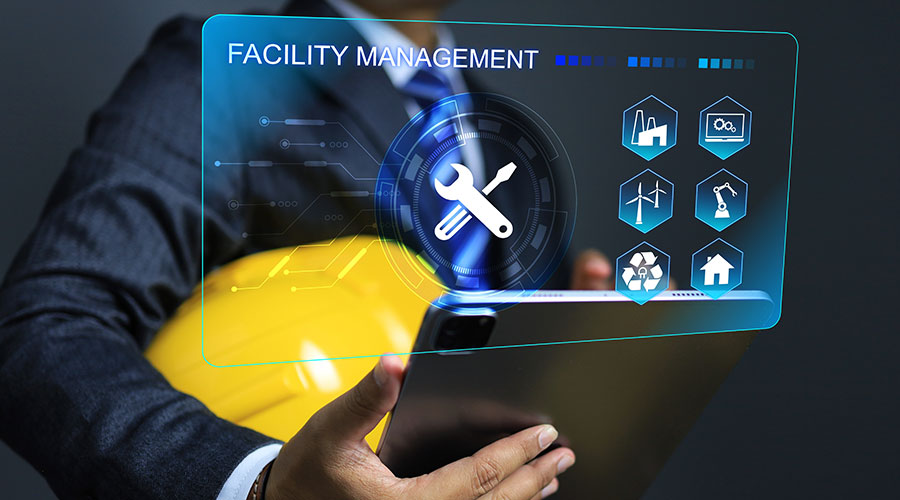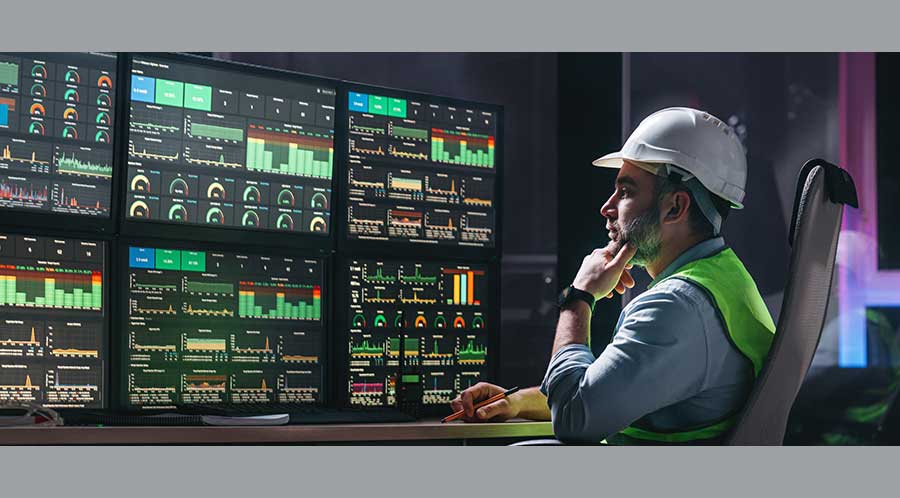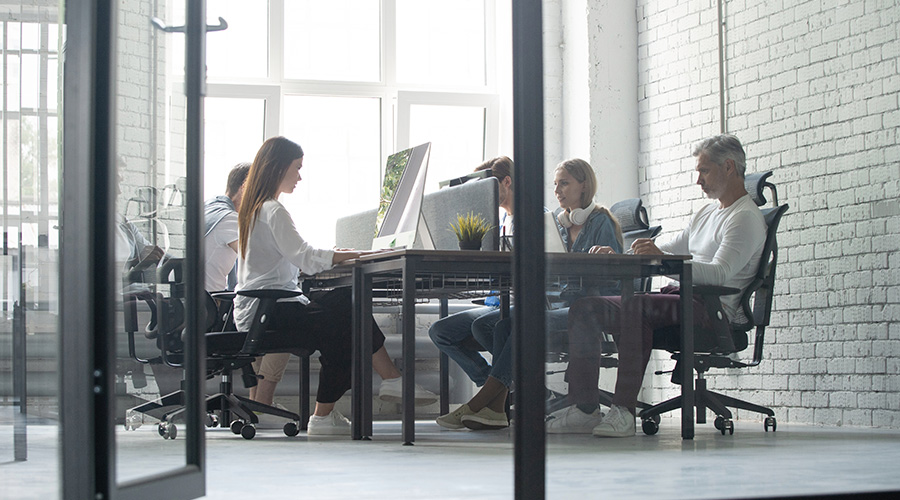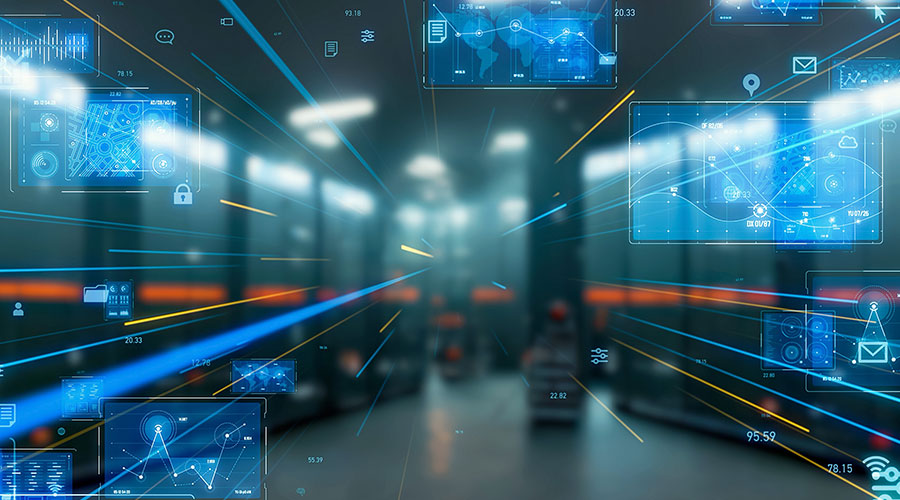Maximum CMMS
‘Re-installation’ helps facilities get the most out of underutilized
features and functions.
The computerized maintenance management system (CMMS) is one of the most important and powerful tools in the arsenal of maintenance and engineering managers. In many cases, an installed CMMS isn’t producing the quality of management information expected. Almost invariably, an evaluation of the CMMS begins with a critical review of the software itself.
A recurring lesson in history is that obsolete tools in the hands of a master invariably produce better results than the latest technology in the hands of an amateur. So for managers seriously seeking improved maintenance management, the first step is for the entire department to learn how to use the tools. Remember that there are no bad CMMS, just bad implementations or incomplete use.
Optimizing the system requires a different approach than performing the initial system installation and configuration. Installation and configuration require expertise in the software, while implementation or optimization require expertise in maintenance management.
Although the software vendor is the appropriate resource to install and train users on the system, they might not be the most appropriate resource to optimize the system. Successful CMMS implementations require either an in-house champion with sufficient knowledge in proven computerized maintenance management principles or an outside consultant.
CMMS Optimization
One commonly misapplied term in the CMMS world is implementation. What software vendors normally provide as implementation services are in reality only installation and configuration assistance. True implementation requires that vendors fully define, review and implement all workflow processes, data-recording requirements, management reports and performance metrics.
In most CMMS installations, organizations stretch the budget just to get the CMMS installed, provide basic training for users, and have some custom reports created. So, few resources — time, money and personnel — are left for the real work of making the system perform to capacity.
A CMMS optimization — also called re-implementation — can pick up where installation and configuration leave off, allowing maintenance and engineering departments to realize a much greater return on the original investment without significant software or hardware costs. Managers can find these results even if a number of years have elapsed since original installation.
Managers are likely to find more success through CMMS re-implementation if they remember two rules:
- Nothing is sacred. Doing what has always been done is a very powerful force. In extreme cases, managers might have to make a copy of the existing CMMS for historical purposes and start over with a clean system.
- Educate management. A CEO once commented, “If it makes good business sense, why would I not do it?” Managers will need to take the time to write down the advantages and long-term results of the changes, as well as the disadvantages and inconveniences that they can expect.
Step 1: Assessment
Managers will need to take an objective look at the current CMMS. But instead of getting bogged down in the practicality of the process, they should approach it from a wish-list point of view, as if they are auditors and it is someone else’s responsibility to act on the assessment. Questions to ask include these:
Do preventive maintenance (PM) procedures work? Look at total employee hours, grouped by work type or class, comparing the amount of emergency or breakdown repairs to the amount of PM work accomplished. This analysis should show a decline in emergency or breakdown repairs if technicians perform the correct PM tasks at the correct frequency.
Are PM inspection frequencies accurate? Look at the number of scheduled work orders grouped by work type or class, analyzing the amount of work identified through PM inspections. This ratio should be approximately one to six. In other words, performing a PM task six times should generate at least one corrective work order.
Where are the reliability problems? And where should maintenance technicians focus limited resources? Look at the total cost for work type or class emergency/breakdown and call-in repairs. Then sort work requests by equipment or equipment type or class, looking at both open and closed work orders. This process will identify, by equipment number or class, where costs accumulate.
Where is maintenance spending its energy? Look at the total employee hours grouped by work type or class. Depending on the established work types, this process will identify the type of work the maintenance organization is accomplishing. Identifying this element is critical to ensure true maintenance work is accomplished in support of production goals and targets.
What is the work backlog? Look at the ready backlog of work. There should be no less than two weeks and no more than four weeks of ready backlog — where all parts and materials available are awaiting scheduling — and four to six weeks of total backlog.
How efficient is the maintenance work force? Review estimated hours versus actual hours on the work orders executed by each crew. Actual hours should be within 15 percent of the estimated hours.
How much money does the organization spend on maintenance? This cost includes parts, material costs, contractor costs, and maintenance labor. Analyze the material cost, contractor cost, and labor cost grouped by work type or class, which will provide the total cost to the maintenance organization.
Step 2: Identify Problems
By reviewing the results of this assessment, managers can isolate the specific reasons that information gathered by the CMMS is inaccurate or unavailable and develop a re-implementation strategy. The CMMS modules that are likely to reveal the causes of the problems are these:
Drop-down lists and look-up tables. These tables should be concise. A standard step in CMMS installation and configuration is to overpopulate drop-down lists for items such as crafts, work types and equipment types. If a list has more than 10 items, managers should be suspicious because too many items leads to confusion due to personal interpretation. Managers should review these lists and combine, delete or edit items to simplify and clarify.
Labor/Employee module. This module should contain all the crafts or skills assigned to the department. This data is required to support a CMMS’s planning and scheduling function. Also, labor rates should be defined by individual or by craft so that accurate costs can be tabulated.
Equipment module. This module should contain all essential data for all equipment throughout a facility. Typical items that should be included are: a unique equipment number; a well-structured description; equipment type or classification, or both; location; cost center; department; warranty information; and links to the bill of material information.
Carefully review the equipment type or classification list. This table typically grows as the facility ages, but it is important to keep options to a small, useable level. This review is the quickest way to locate information on similar pieces of equipment across one or more facilities.
Inventory module. This module is very similar to the equipment module and has the same requirements for inventory numbers, types, descriptions, etc. Too often, departments don’t fully use this module. All items in inventory should include "where used" information, which details where the item is in the storeroom. Inventory items also require established minimum and maximum levels so needed items are always available.
One of the fastest ways to improve maintenance productivity is to enable skilled craftsmen to avoid wandering up and down storeroom aisles looking for needed repair items or parts.
Work order module. In this module, various work types or classes reside. Managers should review the different work types to see if all typical work the maintenance department accomplishes is quickly identifiable. If it isn’t visible here, it won’t be visible in reports. As noted above in the discussion on reports, the work by type or class is one of the biggest key performance indicators.
PM or tasks module. Here, detailed descriptions and step-by-step guides for maintenance activities reside. These PM tasks should specify tools, materials, job steps, associated safety notes or precautions, and estimated times to complete a job.
Managers should review the detail of instructions to make sure they don’t insult workers’ intelligence but instead merely establish standards. This step is critical to ensure that all maintenance workers assigned this task complete it consistently.
Another often-overlooked aspect is the constant improvement that PM tasks should receive. As each task is closed out, technicians should provide feedback information to improve the process. This step could be as simple as adding special tools or as complex as completely rewriting the steps and their order. Doing so will quickly yield productivity improvements as lessons learned are captured and used the next time.
Although managers should consider reviewing numerous other areas of the CMMS, those discussed generally are found in all systems, should be easy to verify and can be used to quickly check the performance of a CMMS.
Whether installing a new CMMS or optimizing an existing one, all the drop- down list definitions, validation of the work flow/process, refining the hierarchy, and establishing the management reports must be performed. If they are not done, installing the latest and greatest technology will yield no better results than the old system did.
Related Topics:











